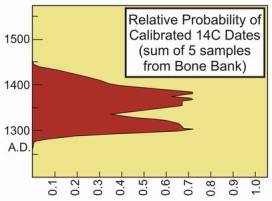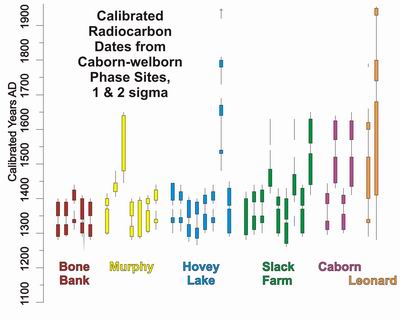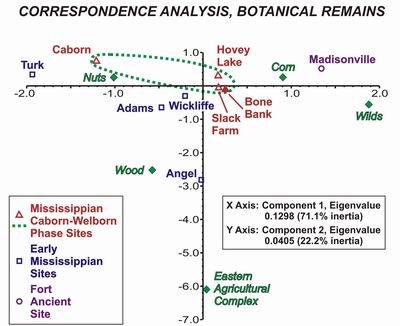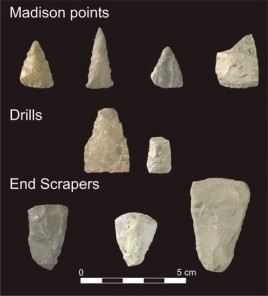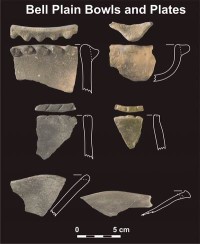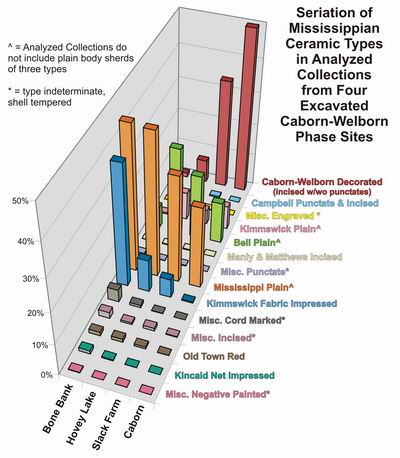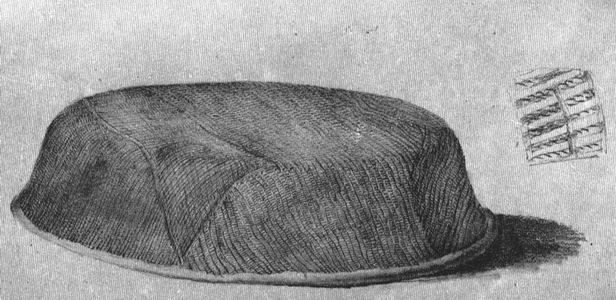Interpretation of 14C assays is hampered by fluctuations in the late prehistoric calibrations curve, which often produce two or more calendrical intercepts per sample.
- Bone Bank was established early in the Caborn-Welborn phase, about A.D. 1400, when several other large villages - Murphy, Hovey Lake, Slack Farm - also became settled.
- The social and political landscape was greatly changing at this time, since the neighboring Angel phase chiefdom was collapsing.
- Compared to other Caborn-Welborn phase sites, the recovered assemblages from Bone Bank date earlier on average and to a shorter interval. However, the excavated basal middens and features may not be representative of the temporal duration of the residential and mortuary areas of this village that were eroded away by the late 1800s.
